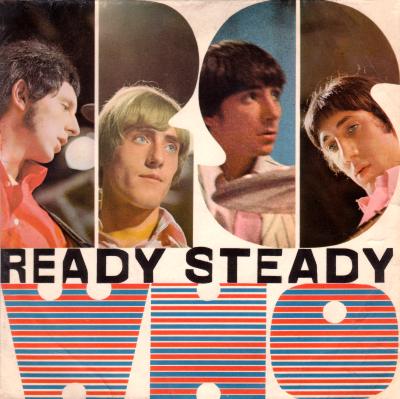|
The Who were probably the most progressive of all the British beat groups that found great chart success during the 1960s. They had begun as a reasonably straightforward R&B line-up, but the group was too dynamic, emotional and innovative to stay in the same groove for long. Consequently, they were responsible for moving their music towards more ambitious targets than most of their contemporaries. The foundation of what was to become the Who was created through an agreement made between Townshend and Entwistle at the foot of the main staircase of Acton County Grammar School during 1959. (Incidentally, the author of this piece attended the same school at that time! I have often wondered what the music teacher 'Mrs. Holman' made of them, but I digress.... ). They began by playing traditional jazz, but later decided that rock and roll held more appeal and they subsequently joined up with Roger Daltrey and a drummer named John Sandon in Daltrey's group- 'The Detours'. Roger had previously been at Acton County with Entwhistle and Townshend but had left before taking 'O'-Levels- incidentally, at school he was often referred to by the nickname 'Percy'- a schoolboy play on words derived from Percy Dalton's {Daltrey's} Peanuts! (A former Detour member tells me that he also lived in Percy Road, Shepherds Bush which may also have contributed to the name). This line-up worked as a support act in the many west London venues of the day.. By late 1963 John Sandon had been replaced by the more intense Keith Moon, and by 1964 they had become 'The Who'. They became a popular act at the Marquee club in London with a reputation for the boisterousness of their performance. However, they made a brief attempt to break with this image by adopting the name 'The High Numbers' and setting themselves to appeal to the growing 'mods' fashion of the time. It was in this 'clean cut' guise that they released their first single, which made no sales impact at all and is now a rare collector's item. Despite this setback the group reverted to their previous name and billed themselves alongside the appropriate words: "Maximum R&B". After failing to secure a recording deal with EMI, the group eventually found their way on to a record label, obtaining interest from Brunswick in the U.S. A series of imaginative and innovative singles releases followed and the Who's spirited stage antics became increasingly familiar to TV audiences during 1965. In fact the group's reputation for smashing their instruments grew from an accident in which the neck of Townshend's guitar was broken during a particularly physical performance due to its impact with a low ceiling. In later years the group found themselves with a contract which, although probably less beneficial than they would have liked in some ways, covered the replacement cost of their kit. Unsurprisingly, instrument smashing became an established and expected part of their act. |
|

|
The EP (592-001) on the left was the only release on that format that The Who had during the 1960s. Perhaps Reaction believed that only singles were significant. Whatever the reason for their lack of material on EPs, "Ready Steady Who" has now become a very collectable item. The EP contains tracks that were recorded on a special edition of the TV Programme "Ready Steady Go" which was given over entirely to the Who. It features some interesting material- including the elusive B-side "Circles" and the Who's interpretation of the Beach Boys' "Barbara Ann". |
|
As the 'mods' fashion declined so too did the group's fortunes with chart singles. However their longevity was never threatened because Townshend's creativity was there to send the music in a new direction. Before the decade was out the group had produced Townshend's now almost legendary rock opera 'Tommy'. The Who's musical innovation continued throughout the1970s although this was a traumatic period, both for the group and its individual members. After breaking up and then coming together again, it looked as though they might be near the end when Keith Moon died tragically during 1978. However, the Who's tempestuous existence resumed again in 1979 when former 'Small Faces' drummer, the excellent Kenny Jones, joined to fill the place left by Moon's demise. Although since then the band members have each made individual careers- with Townshend's being much the most successful- they have regrouped sufficiently often to be regarded as one of the most enduring of the beat bands of the era. |
|
